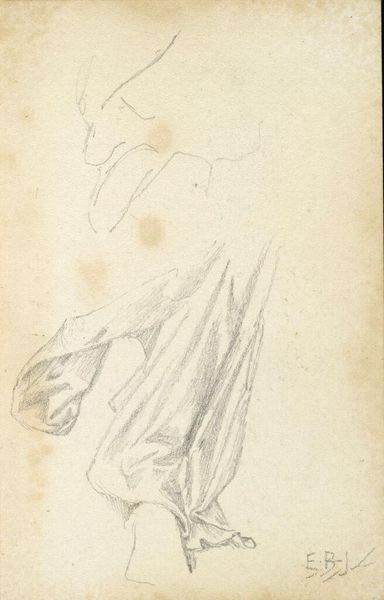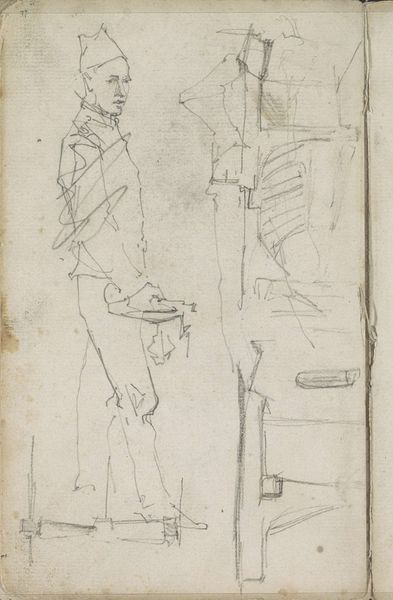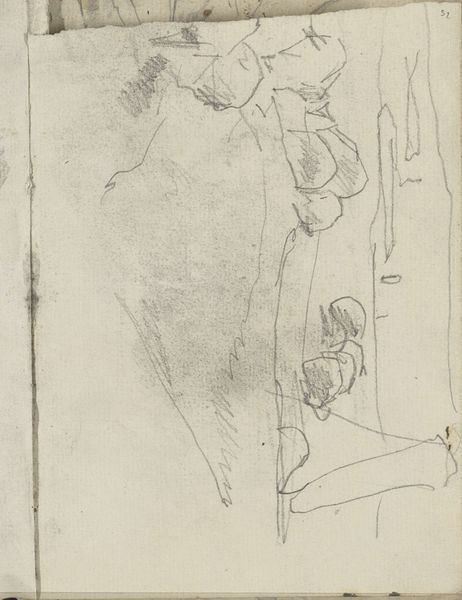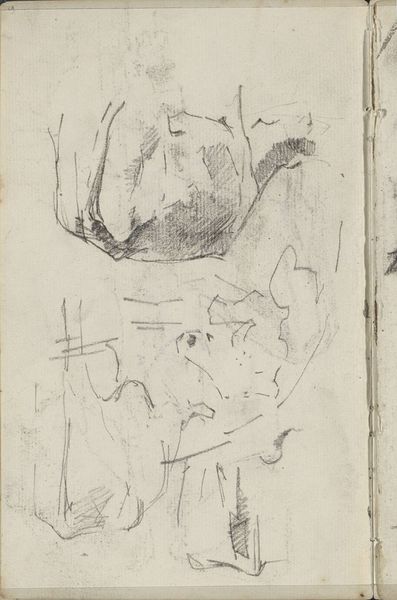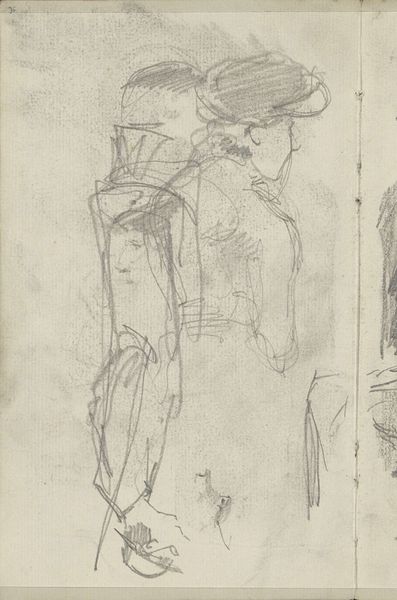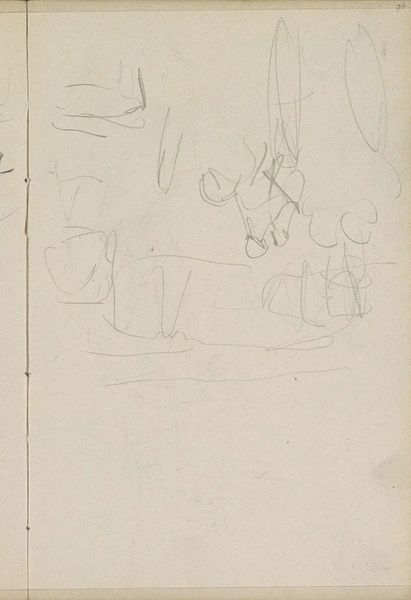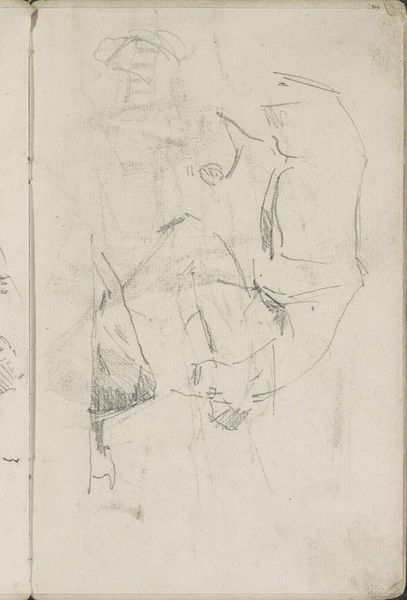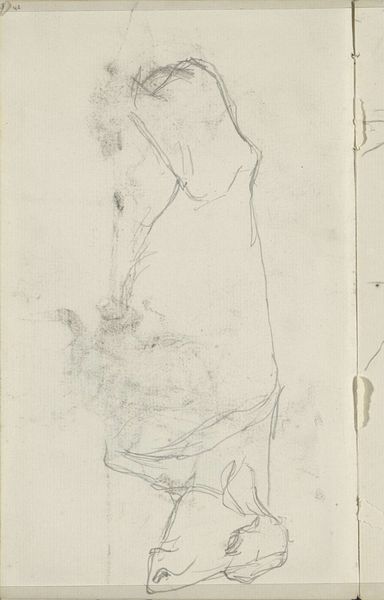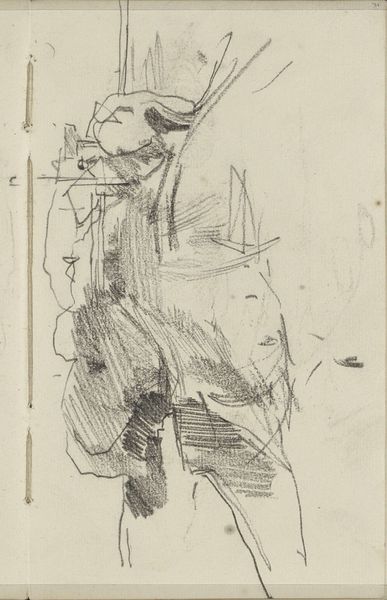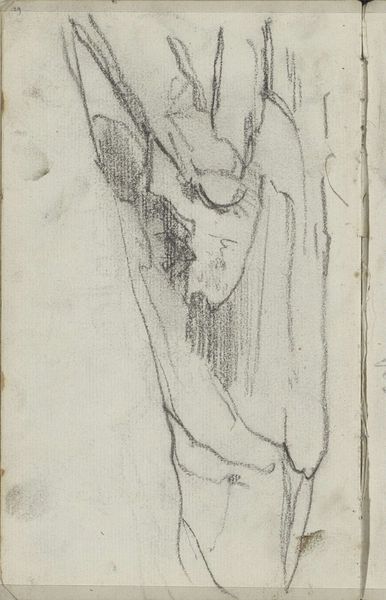
drawing, pencil, graphite
#
drawing
#
impressionism
#
pencil sketch
#
landscape
#
figuration
#
pencil
#
horse
#
graphite
Copyright: Rijks Museum: Open Domain
Curator: This is "Paardenbenen en een figuurstudie" by George Hendrik Breitner, likely created between 1883 and 1886. It's currently housed here at the Rijksmuseum. A work rendered in graphite and pencil on paper. Editor: It feels so immediate. Almost like catching a glimpse of something fleeting, the way the lines capture the horse's form. It makes me wonder about Breitner's process, his relationship to his subject. Curator: Indeed. Breitner was fascinated with movement, especially as captured through the working-class experience of urban life. The horses, we should note, were often used for heavy labor within the city. I would place it within the broader discourse of labour and its brutal impact on living creatures, as a commentary on societal forces, perhaps? Editor: Precisely! It goes beyond just sketching horse's legs. Considering the physical toll on these animals, pulling carts and carriages daily... And seeing the quickly, maybe desperately sketched human figure, as part of this labor network... what does their relation imply about our societies and systems of oppressions. It does seem as if Breitner is considering the means and context of all involved Curator: His interest in working class life extends to people too, and these impressions can also speak to contemporary dialogues on labor rights and the conditions under which humans and animals alike contribute to society. Editor: Right. And looking closely at his mark-making – the way the pencil seems to glide, building form, indicating areas of shadow and musculature so efficiently – points to the direct and perhaps necessary, urgency under which these studies must have been undertaken. It invites a closer look at the techniques of impressionism that bring that tension of daily labor. Curator: Absolutely. It is not only what he depicts but how that makes it powerful, giving insight on social and political reflection, using his medium for commentary. Editor: Well said. The interplay between subject, technique, and social consciousness truly makes this work remarkable. I walk away from it pondering about these conditions and processes still present today.
Comments
No comments
Be the first to comment and join the conversation on the ultimate creative platform.
